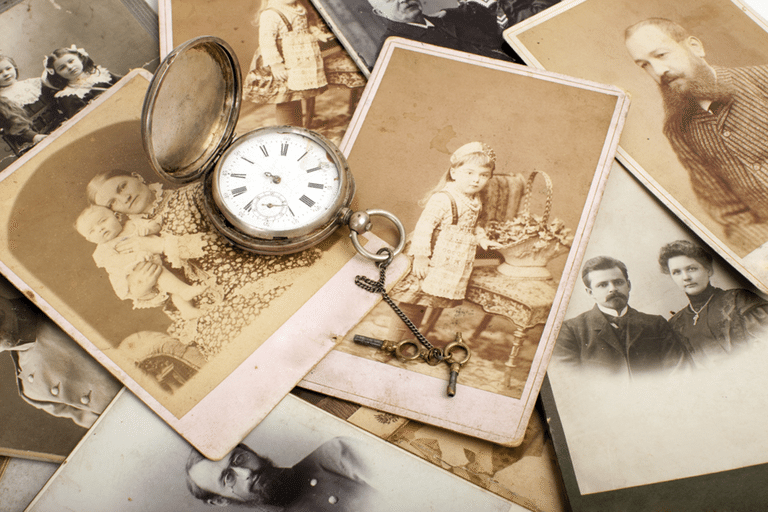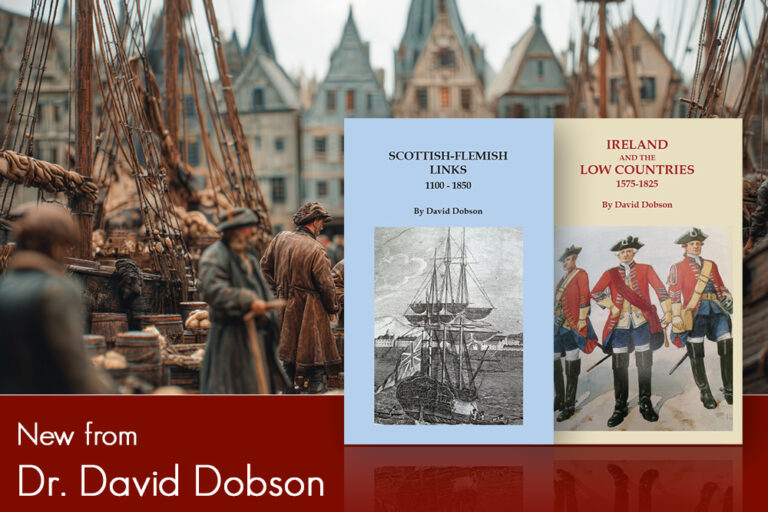I first heard these attention-getting words from frequent national genealogical conference speaker, Paul Milner. As both a librarian and a researcher, I could not agree more. Many customers come into a library and ask “Where is your genealogy collection?” These customers may lack well-developed search strategy skills, may think that all the resources they will need will be collected in that one specialized collection, or they may be primarily motivated by the addition of generations to their pedigree chart. Their approach to library resources, however, means that they may be in danger of limiting themselves to the skeleton-building level of research: birth, marriage, death, and will dates and locations. This preliminary-level research needs to be done, surely, but it represents only a few pieces of the puzzle. To me, the most exciting and rewarding part of genealogical research is the next step: putting flesh on that skeleton. As another speaker, Craig Scott, often says in his lectures, “We want to have ancestors who are as fat as possible.” As researchers we can only know our ancestors by understanding them in the context of a specific place and time period in history. How do we go about doing this? As Paul puts it, we have to “get out of the genealogy collection.”
Again, a sound search strategy is paramount. What materials might be found outside of the genealogy collection? That answer may depend on the library’s definition of what it includes in the genealogy collection, and thus will change with each institution visited. Ask a librarian to describe to you that library’s philosophy for developing its genealogy collection. Is it solely local history, specific to the town and/or county? Is it broader in scope? If so, how? With that understanding, you will be better prepared to use the full spectrum of resources in that library. What types of resources might you consider using?
- Atlases and Maps. Where does your library keep its atlases? Are they in the genealogy collection or in the general reference collection? Locate them so that you can place your ancestor accurately within a specific state, county, town or city. Make copies of pertinent maps, making sure that you record bibliographic information on the back of the map. Mark your ancestor’s location on the map. If you are really fortunate, there may be land ownership maps for the county, either printed or kept flat in map cases.
- Directories. Be sure to check such directories as the National Yellow Book of Funeral Directors (Nomis Publishers, annual), often located in the general reference collection. This directory provides “virtually every” funeral home in the United States including name, address, phone, fax, and toll free number. Such information allows you to follow up on information included in a death certificate, locate burial records, and cemetery locations, etc. City directories also may not be located in the genealogy collection but, with a caveat about accuracy of the information provided, may include treasure troves of information including death dates, occupation, business locations, maps, indication of widowhood, children reaching adult age, etc.
- State, County, and Town Histories. State histories will provide you with a big-picture understanding of the evolution of your ancestor’s locality. It may provide information on migration patterns into and out of the state. It will provide information on major geographical impacts on the population, major industries and business activities, historical events of significance, etc. Make a chronology of events that would have occurred during your ancestor’s lifetime or residence in the locality. County and town histories will discuss these same events focused on a smaller geographical area. Create the same type of chronology and note where state events coincide with events within the county or town. Town histories will often include compiled genealogies of prominent families, including pictures of individuals or houses in which they might have lived. Compare any geographic information you find in these histories with the information you have abstracted from deeds for your ancestors (You haven’t read the deeds? Stop, do it right away!).
- Sources on Specific Historical Subjects. Specialized histories may exist for the geographical area in which your ancestor lived. For example, Historic Architecture of Bourbon County, Kentucky by Walter E. Langsam and William Gus Johnson (Historic Paris-Bourbon County, Inc., 1985) mentions many residents of the county as it provides architectural descriptions of specific structures including who built them, who owned or lived on the properties, sometimes over several generations. A map inside both the front and back covers adds additional visual information. Depending on the library, a book such as this one may well not be in the genealogy collection, but instead may be in the architecture section. The library’s catalog will assist you in locating such items. Other example may be found in such books as M. Ruth Little’s Sticks and Stones: Three Centuries of North Carolina Gravemarkers, which discusses the cultural and ethnic heritages found in old graveyards in North Carolina. This work not only explains the meaning of the design and symbolism of these markers, but also provides genealogical information about the individual buried beneath the markers. Richard B. McCaslin’s Portraits of Conflict, a Photographic History of North Carolina in the Civil War (Univ. of Arkansas Press, 1997), includes stories of individuals in North Carolina during the Civil War with extensive use of photographs and maps. Thomas J. Taylor’s A History of the Tar River Baptist Association, 1830-1921 (The Association, n.d.) presents the history of a specific religious organization. By reading it, I was able to discover previously unknown anecdotal information concerning my husband’s 3rd great-grandfather, a Baptist minister in the Tar River Association in the 1850s and 1860s. Check any available topical histories including bank histories, school histories, and business histories. Even though your ancestor may not be mentioned individually, these histories reveal the context of your ancestor’s life and lead you to a fuller understanding of him or her.
- Resources You Might Not Normally Consider. Keep an open mind as to what constitutes a “genealogical resource.” While the subject matter of the publication may be very narrow, information included in it may be very helpful in your research. An example may be found in the Herd Book of the Maine State Jersey Cattle Association (The Association, 1800?-). At first glance, this triennial title would appear to have more to do with animal genealogy than human. However, it is indeed worth a second look if you have Maine ancestors who raised cattle for a living. Part I is an official list of bulls with number, name, color, and distinguishing marks; date of birth; name of the breeder or proprietor; residence; pedigree of the bull; and the no. of the sire and dame. Part II provides the same information for cows and heifers. Part III provides all of the transfers by number, name of the animal, and to whom transferred. The final section provides a list of members by name and town. Perhaps this resource is not one of the finest genealogical resources for Maine research, but wonderful information can be extrapolated: income or wealth, land ownership, and the names of neighboring stock owners. Information gained from such a resource might lead to an agricultural census search for the individual in question or to tax lists that might provide additional socio-economic information for the family.You may also want to check travel guides, either general or historic. Judy and Ed Colbert’s Virginia, Off the Beaten Path, a Guide to Unique Places (Globe Pequot Press, 1989) lists all types of sites, including historic properties describing their significance and the people who lived in them. Guides listing bed and breakfast establishments may also be very helpful as these inns are often located in historic homes. I once shared a genealogical bus trip to Washington D.C. with a friend who talked about her husband’s ancestors in Massachusetts and the research she and her husband had done on his ancestor’s home, now a popular inn there. I was amazed to discover that his ancestor’s home was a restaurant my parent’s took me to as a child for “special occasion” dinners.A final suggestion is to look at books that publish the text of state historical markers. These often provide clues about people, locations, and events that can help flesh out the story of your ancestor.
The foregoing are only some of the types of resources you may want to look for during a research trip. Often they will be located outside of the designated “genealogy collection.” Discuss the make-up of the collection with the librarian; keep your mind open to new possibilities. Start your work in the genealogy collection, but make sure that at some point you “get out” of that collection into the wealth of materials in the rest of the library’s holdings.




